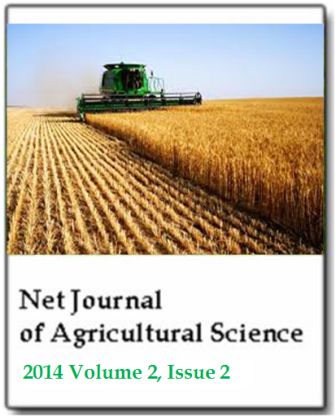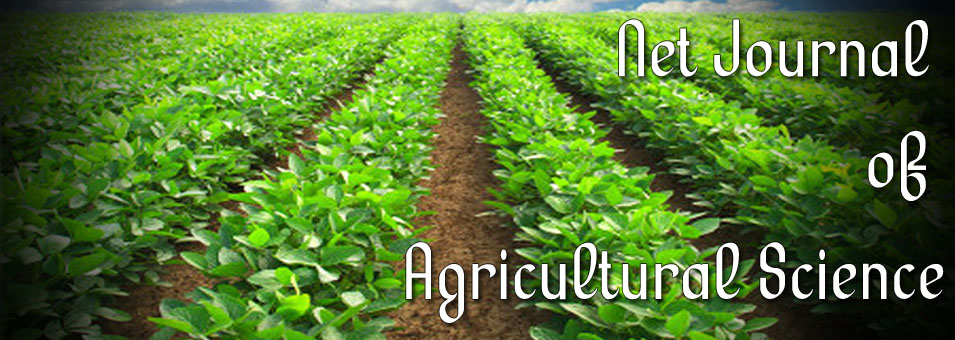Growth performance and haematological responses of African mud catfish Clarias gariepinus fed dietary levels of Moringa oleifera leaf meal
H. E. Dienye and O. K. OlumujiNet Journal of Agricultural Science
Published: June 11 2014
Volume 2, Issue 2
Pages 79-88
Abstract
The effects of Moringa oleifera leaf meal on the haematological indices and biochemical enzymes of Clarias gariepinus fingerlings was investigated for a period of eight (8) weeks. M. oleifera leaf meal was substituted for fish meal at 0 (control), 10, 20, 30, 40 and 50% in the six different diets. C. gariepinus fingerlings (mean weight 9.17 ± 0.33 g) were randomly distributed into concrete tanks at 10 fish/tank in triplicate treatments and were fed twice daily at 8.00 hrs to 9.00 hrs and 17.00 hrs to 18.00 hrs for 8 weeks. The haematological parameters results showed that packed cell volume (PCV), red blood cell (RBC) and haemoglobin (Hb) were 21.00 to 32.00%, 1.00 to 3.60 × 106 mm-3 and 7.00 to 920 g/100 ml respectively in the fish in the experiment. These parameters decreased as M. oleifera leaf meal increased in the diet in both stages of the experiment. The white blood cell (WBC) and lymphocytes range obtained were 7.20 to 8.02 × 103 mm-3 and 60.00 to 70.00% respectively in the experiment. There was increase in the WBC and lymphocytes as M. oleifera leaf meal increased in the diet. The serum enzymes: alanine aminotransferase (ALT), aspartate aminotransferase (AST) and alkaline phosphatase (ALP), in the fish fed with diet containing 0, 10 and 20% M. oleifera leaf meal were not statistically significant (P > 0.05). The ranges 11.30 to 13.20, 19.57 to 27.00 and 46.80 to 59.00 Ul-1 were recorded for ALT, AST and ALP respectively for the six treatments. In conclusion, haematological test reveal that 10% substitution rate of M. oleifera leaf meal in catfish (C. gariepinus) diet would not have any adverse effect on the blood and serum enzyme.
Keywords: Haematology, Clarias gariepinus, Moringa oleifera, serum enzymes.
Full Text PDF
